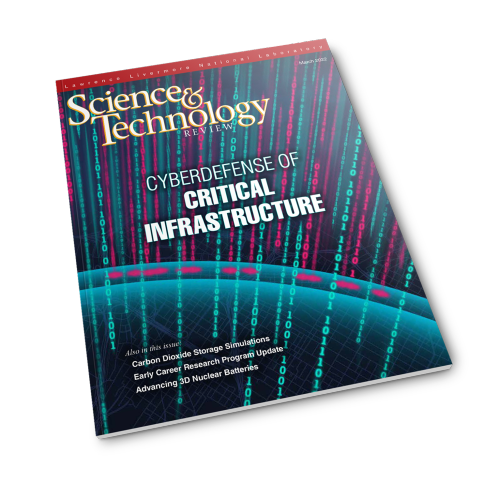NEWS
Driving New Discoveries
Looking for more?

Science & Technology Review
Science & Technology Review is published eight times a year to communicate, to a broad audience, the Laboratory’s scientific and technological accomplishments in support of national security and other enduring national needs. The publication’s goal is to help readers understand these accomplishments and appreciate their value to the individual citizen, the nation and the world.




